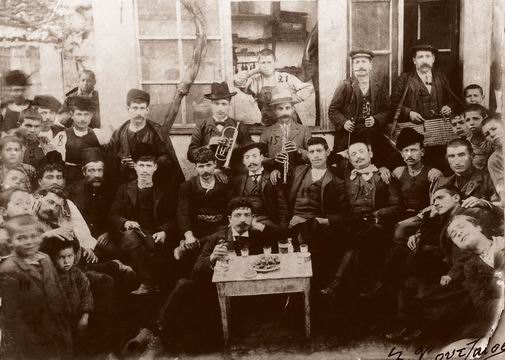|
The ghlendi of Karpathos is a socially unique and culturally unparalleled phenomenon in the entire Aegean Sea region. Its uniqueness is intertwined with its distinctiveness. What is distinctive about the Karpathos ghlendi is its symbolic nature. The ghlendi constitutes both the topos (space) and the tropos (mode) of a dialogical and reflexive condition of being-in-the world. The culmination of the ghlendi process is marked by the emergence of paroussia, a dialogical modality, in the context of which, experience, expression, and communication acquire new perspective and orientation. Although the Karpathos ghlendi is a unique cultural phenomenon and as such it is only encountered on Karpathos island and in the communities of the Karpathian diaspora, other cultural expressions of the ghlendi aspect of dialogical singing abound in the Aegean Sea region. The corresponding cultures differ radically from the Karpathos culture of the ghlendi, most notably in their perceptions and expressions of communality and reflexivity. This is not to say that the other cultures are not communal or reflexive in their own dialogical and symbolic expressions of their own ghlendi experiences. In Karpathos, the dialogic and the symbolic constitute a unity of perception and expression --expressed as a complex modality of dialogical symbolism and, at the same time, a symbolic dialogics--, whereas in other cultures the two qualities are not necessarily united; as a result, they constitute other formations, based on the priority of either the dialogic or the symbolic.
Its complexity and plurality is perhaps best manifested in the coexistence of European classical music and its popularized expressions (e.g. French and Italian operettas), on the one hand, and, on the other, Ottoman classical music and the various musics, traditional or not, of the ethnic cultures that comprised the cosmopolitan nexus of the city.
Ghlendi;
Aghiassos (Lesbos), early twentieth century. (Dionysopoulos ibid: 33)
The poetic structure of the Greek manes usually conforms with the structure of the mandinadha. The singing of manes, however, differs completely from the singing of mandinadhes, constituting a culturally distinct genre by itself. Although manedhes are sung occasionally in the context of the ghlendi, it is the singing of mandinadhes that defines the performative dynamics of the ghlendi in Lesbos, exactly as it happens in Karpathos. The most significant expression of communal and dialogical singing is found in the district of Plomari. |

